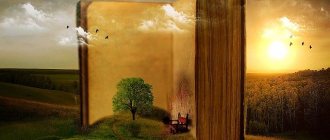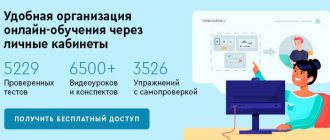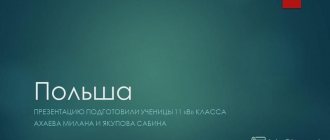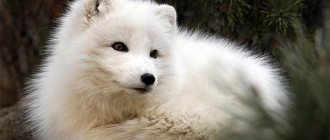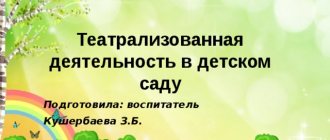Summary of GCD in the senior group. Where did the book come from?
Summary of educational activities for children 5-6 years old.
Topic: “Where did the book come from?” Main activity. Cognitive - research activities. Form of activity. Joint activities of adults and children. Form of conduct. Presentation and conversation. Target. Development of children's cognitive interest and interest in books. Integration of content of educational areas. Cognition. Continue to enrich children's understanding of the world of objects. To form the idea of children that any thing was created by the labor of an adult. Cultivate a caring attitude towards books - a source of knowledge and wisdom. Work. Continue to expand children's understanding of adult work. To provide knowledge about the work of printing workers. Cultivate respect for people, creators of books. Communication. Develop the ability to maintain a conversation. Exercise children in selecting adjectives for nouns, forming verbs from nouns. Help children use words exactly as they mean. Preliminary work. Game situation “Exhibition of books - such different books.” Materials for the lesson. Box with wooden objects and a book inside, books, presentation "The story told by the book." Progress of activities. 1. Motivation for activity. All the children gathered in a circle. I am your friend and you are my friend. Let's hold hands together and smile at each other. — Children, they gave me a set of objects. It says here, made of wood. Let's see what lies inside? Children look at the objects in the box. Game "Which, which, which, which" spoon, which? (wooden) soldier, which one? (wooden) nesting doll, what kind? (wooden) egg, which one? (wooden) cubes, what kind? (wooden) - How did the book end up among these objects? (Children's assumptions) The teacher takes the book in his hands and brings it to his ear. — Children, the book told me an amazing story. It turns out that she came to us from the forest and was made of wood. More precisely, not a book, but the paper from which the book is made. Do you want me to tell you this story? 2. Presentation “The story told by the book.” - I was born in the forest. Lumberjacks cut down the trees and took them out of the forest. The trees were brought to a paper mill, stripped of bark, sawn, and ground into sawdust. The sawdust was boiled to form a batter-like mass. The wood dough is rolled out into long, wide strips. The raw paper strip passes through a series of rollers. Some rollers squeeze out the water, others dry the tape, and others polish it. An endless ribbon of paper crawls out of the machine and rolls into huge paper rolls. Then the paper is cut by a special machine into sheets of the required size. Thus, moving from machine to machine, wood turns into paper. Paper was made at a paper mill. But this is not enough for a book to appear. - Who will help turn white paper into a magic book? (children's answers) - Who will come up with interesting stories and fairy tales, write poetry? (children's answers) - What writers and poets do you know? (children's answers) - Who will draw beautiful pictures in books? (children's answers) - What illustrators do you know? (children's answers) - So, the magical transformation of white paper into a book begins. The writer writes a manuscript. A manuscript is something written by a person's hand. The writer brings his manuscript to the editor. The editor reads the book carefully and edits it. Editing means correcting the manuscript and correcting errors. The editor hands the book to the artist. The artist reads the manuscript and draws pictures to accompany the text - illustrates. — What fairy tale does Evgeniy Mikhailovich Rachev draw an illustration for? (children's answers) - The writer wrote a story or fairy tale. The artist illustrated the book. But this is only one book. And there are a lot of children in our country, and they all dream of reading this book. How to be? (children's answers) - There is such an amazing place - a printing house. Books, magazines, and newspapers are printed here. First, the book is prepared for printing. The editor edits, the artist illustrates, the proofreader corrects the text, the designer thinks through the design of the book. The typesetter and printer create a book layout (sample). When the book layout is ready, you can replicate it and print it. In Russia, children's books are published in large quantities. — They print in a printing house on large sheets, several pages at once. You’ve printed it, but it’s inconvenient to read, what should you do? The sheets of the future book are folded on a special machine and collected into one book. But is something missing? Need a cover and binding! Various complex machines help printing workers print books. - Now you and I will rest a little. Imagine that you are in the forest. There is fresh, pleasant air in the forest. Inhale it deeply, exhale deeply and slowly. (Breathing exercise 3-4 times) Physical education You and I are entering the forest, There are so many miracles around here! They raised their hands and shook them, These are trees in the forest. The arms are bent, the hands are shaken. The wind knocks down the dew. Let's wave our hands to the sides, smoothly - These are the birds flying towards us. Let's show how they land smoothly - the wings are folded back. They bent over and sat down. Together they flew into their nests. Children take books and look at them. — To prevent the sheets in the book from getting mixed up, the page number is written on the sheets of paper (showing the page numbering in the book). The folded sheets are stitched, glued or fastened with scrapers. In your book, how are the leaves connected? (children's answers) - The cover of a book can be soft or hard (made of cardboard) (showing book covers). If the book is thick, the covers are connected by a binding (showing the binding). Game "Add a Word". - Add words in rhyme and meaning. There is a little book of clothes, It’s called -.... (cover). There are books in the garden and at home. Made of paper and... (cardboard). Our books are not simple, in order they are... (sheets), So as not to get lost when reading, Numbered.... (pages) . The pages are all crossed, They are held together.... (binding). — On the cover of the book they write the name of the author and the title of the book (show). Sometimes the artist's last name is written. And at the end of the book, (show) the printing house in which this book was printed and the names of some people who helped print this book must be indicated. Unfortunately, it is impossible to write in the book the names of all the printing house workers who participated in the creation of this book. Why do you think? (children's answers) - That's right, a lot of people work on creating one small book. If you print all the names, the book will be very thick and heavy, and children will not be able to lift it. — You and I will remember those who created our books. Game "Who does what." Writer (writes, composes) Illustrator (illustrates, draws) Editor (edits) Proofreader (corrects) Typesetter (types text) Printer (prints a book) - When all the children go home, the group becomes quiet and quiet. One day I heard what the books were whispering about. Do you want to know what the books whispered about? Please don’t pick me up with dirty hands, I’ll be ashamed if I’m dirty or stained! — one book whispered, “Don’t bend my binding.” I may lose the most interesting pages! - said another book. Please use a bookmark and do not fold my pages, they will tear! I love cleanliness, but I'm afraid of water. Protect me from rain and snow! Please do not draw on my pages with pen or pencil. It will be difficult for other children to read me! — Do you remember the requests of the books? Try to fulfill them! - This is what people say about books. A good book is your best friend. Gold comes from the earth, and knowledge comes from books. You read a book and fly on the wings of a dream. Illiterate is like a blind man, but a book opens his eyes. The book will help in work, and will help out in trouble. 3. The result of the activity. — What new or interesting things did you learn today? (children's answers) - What else would you like to know? (children's answers) - Who will help us find new knowledge? (children's answers) - Thank you, it was a pleasure talking with you. Autotraining. And now we will smile, Let's hold hands together.
And as a farewell we will give each other a wish - Always seek knowledge. Then you will become smart! Presentation on the topic: The story told by the book
We recommend watching:
Game - quiz on traffic rules in the senior group “Young Pedestrian” Summary of GCD in the senior group. A journey through Chukovsky's fairy tales Synopsis of direct educational activities in the senior group for children with mental retardation Synopsis of cognitive and research activities in the senior group
Similar articles:
Summary of a safety lesson in the senior group: Safety in nature
Lesson on basic safety in the senior group. Topic: Rules of conduct while walking
Life safety tasks for children 5-7 years old
Summary of educational activities in the senior speech therapy group on the topic “Construction”
Summary of GCD in the senior group on the topic “Little Townspeople”
Project "Where the book came from"
author:
Gagarina Galina Anatolevna
senior teacher of MBDOU "Kindergarten No. 25 in Vyborg"
Novikova Alexandra Alekseevna
teacher at MBDOU "Kindergarten No. 25 in Vyborg"
Project "Where the book came from"
Municipal budgetary preschool educational institution
"Kindergarten No. 25 in Vyborg"
Educational research project
"Where the Book Came From"
Prepared by: senior teacher
Gagarina Galina Anatolevna
teacher
Novikova Alexandra Alekseevna
Vyborg 2018
Explanatory note
Problem:
In the modern world, people are less and less likely to pick up a book, read them, and even less think about how a book is born. Book culture is changing radically these days. The main reason is the development of science and modern technologies, the emergence of new methods of obtaining information. Reading books and reading culture is a pressing problem.
Project type:
educational and research
Project duration:
short-term (1 week)
Project goal (for the teacher):
To create conditions for the development of cognitive and creative abilities, to maximally enrich children’s knowledge and ideas about how a book is created.
Project objectives:
- Introduce children to the history of the creation of the first books. Enrich children's understanding of how a book is made from what material
- Expand knowledge about professions related to books, librarian, writer, editor, illustrator
- Bring children to understand that books must be treated with care so that the books live as long as possible.
- Develop the ability, together with parents, to find an original solution when creating pages of a handmade book.
- Develop the ability to communicate freely with adults and children, to show friendly relations with each other
- To foster in children an interest and love for books.
Project goal (for children):
Find out how a book is created, what professions people help it appear on bookshelves.
Expected result:
—
children's interest in reading fiction will increase;
growth of positive dynamics in the formation of children's ideas about the book and the rules for handling it;
— the level of creativity in artistic, speech, productive and gaming activities will increase;
— the level of parents’ competence in matters of introducing children to reading fiction through cognitive and research activities will increase.
Project participants:
children of senior preschool age, parents, teachers,
Motivation of children and parents (immersion in the project):
The teacher lays out several objects made of wood on the table, invites the children to look at them and say what unites them. Do you know why there is a book among them? Do you want to know how books appear, where they came from?
| Child planning by (shape: general circle) | Creating conditions through the organization of a subject-spatial developmental environment according to activity centers | Joint forms of educational activities between adults and children | Results of the day | ||
| Monday Let's find out where the book came from, the creation of the book | Exhibition of books, portraits of writers Stones, tablets, birch bark, pieces of leather, fabric, sheets of paper, paints, brushes, felt-tip pens | Conversation about the history of book creation with presentation "Where the Book Came From" Reading the story by A. Barkov and R. Suryaninov “Where the book came from” Drawing a picture on stones, birch bark | Quiz: “All about books” Making a book cover | ||
| Tuesday Let's learn about the properties of paper | Collection of paper, collection of paper, algorithm for creating a book, waste and natural material, plasticine Paper napkins of different colors, bowl of water, sieve, bucket, board for rolling out paper, rolling pin | Conducting experiments Paper cuts, tears, wrinkles, gets wet, absorbs oil, makes sound, flies, burns Conversation “What can a book be made from?” “What kind of paper can you make a book from?” “What properties of paper do you know?” | Making paper from napkins | ||
| Wednesday Let's find out who illustrators are | Illustrations for books Paints, markers, colors. pencils, paper | Conversation about the diversity of artistic genres D/game: “Genres of books”, “Guess the title of the book”, “One - many” Developing educational situation: “Who and how they create pictures in books.” Conversation “Why do we need illustrations in books?” | Drawing an illustration for your favorite fairy tale | ||
| Thursday Let's find out who writes books | Attributes for conducting the role-playing game “Publishing House”, “Library” Algorithm for making a bookmark | Solving a problem situation: “Books have disappeared from the group” Conversation “What writers do you know?” Reading a poem by S.Ya. Marshak "How the book was printed." Conversation “The librarian profession, what do you know about it?” | Role-playing game “Publishing House”, “Library” Making a bookmark for a book | ||
| Friday Let's find out what a book is made of and how it is created | Paper collection, book making algorithm Paper, glue, scissors | Conversation about the structure of the book (cover, pages, binding, illustrations) With presentation Memorizing the poem by Valentin Berestov “How to be able to read well” Repairing damaged books Physical school | Making a baby book | ||
| Interaction with parents | |||||
| Questionnaire for parents “Child and Book” Let's compose the story “My favorite book” Consultations, folders for parents: “Smart books for smart kids”, “Which book to choose for a child”, “Recommendation list for shared reading with children of senior preschool age” Weekend excursion: Library, bookstore. Making little books - “a book about a book” | |||||
| Interaction with social partners. Excursion to the library “What is illustration?” | |||||
| Note “Literary Minute” is held every day. Reading the story “Where the book came from” by A. Barkov and R. Suryaninov, poem by S.Ya. Marshak “How they printed a book”, E. Tvorogova “The Tale of Books”, L. Potsepun the fairy tale “The History of a Book”, V. Gaevskaya “In the zoo they gave all the monkeys colorful books” | |||||
| What new did you learn? — we find out where the book came from, the creation of the book; — learn about the properties of paper; — find out who illustrators are; — find out who writes books; — find out what a book is made of and how it is created | Our successes We made a little book, conducted interesting experiments, made bookmarks for books, felt like illustrators and writers. | What else do we want to know? — where did the fairy tale come from? - what kind of fairy tales are there? - What is an encyclopedia? | |||
Project "Where the book came from"
